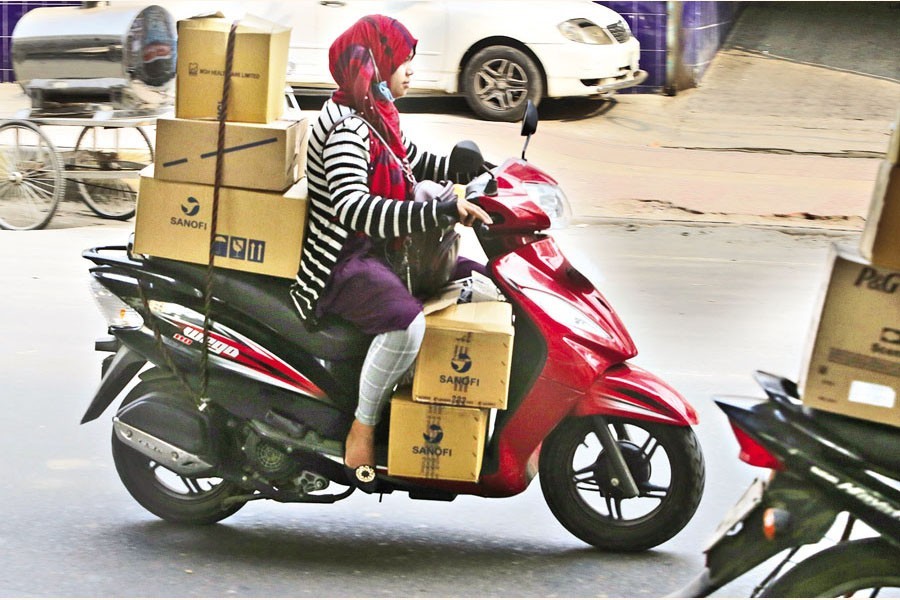The spectacles of young and middle-aged women at the driving seat of their cars are getting rarer by the day in Dhaka. Not long ago women at the wheel were a common sight in Dhaka. Where have they gone? Maybe they are very much in the scene; but due to the fast increase in the number of private cars and other vehicles, women driving cars go unnoticed --- or are rarely encountered in the capital. Once upon a time, the passersby used to stop for a while as the women at the wheel sped by. Of late, a section of intrepid women are seen travelling the Dhaka streets on their Scooty, a variant of scooters. Although most of them are found clad in normal salwar-kameez, a few use extra clothing as a proof of modesty. They do not need head coverings as they have to wear the mandatory helmets. Thanks to the unwieldy increase in traffic on the Dhaka roads, the Scooty-riding women seem to be thinning out on the busy avenues and roads. Actually, they aren't. Surveys find them on a steady increase.
Urbanisation experts ascribe the rise in Scooty popularity among women to their willingness to travel safely. A large number of them are former bus commuters shuttling between home and workplace. Apart from the peak-hour crowds of passengers inside buses, the embarrassing touches, shoving, as well as obscene comments by a section of males make the women's journey by bus a terrible experience. To many, the time spent inside rush-hour public buses is comparable to an ordeal. It's just to avert these irritants that a section of rights-conscious middle-class women are encouraged to use Scooties.
Like in the case of the private cars driven by women, the women-driven motorbikes remain almost unnoticed in the thick of recklessly moving Dhaka traffic. The scenario is set to go through radical changes, with a large portion of the busy roads being made to leave space for women-driven motorbikes, Scooties etc. Except police personnel in the large cities of USA and Europe, women do not travel by heavy motorcycles. Compared to them, young and even elderly women are seen on roads riding light motorbikes or bicycles. In the Southeast Asian cities, college and university students move independently on their ladies' motorcycles. They are also free to use their two-wheelers in the other areas of a city.
Several years ago, the aspiring Scooty users in Dhaka would look to a handful of centres to train on the bikes' driving know-how. Expert lady trainers emerged in some parts of the city with their staff imparting motorcycle-wielding techniques on interested women. As days wore on, these training centres opened in all parts of the city. Women riding easy-to-handle Scooties became a not-too-uncommon scenario in Dhaka. To a lot of people studying the fast changing looks of Dhaka, the rising popularity of motorcycles and scooters among women is no extraordinary development. Time dictates humans. Women travelling by a cycle-rickshaw not covered by a long piece of cloth on all sides were once an anathema to the city. But the craving for changes to meet the demand of time and the urge for welcoming the new ways of life to make it easier are dominant human traits. This is unavoidable. The Dhaka women's opting for motorbikes is, thus, a corollary. The latest development in the Scooty episode is the launch of community training on the two-wheelers' driving for interested women in Dhaka. A print media photograph has recently shown a group of women being trained on Scooty driving in a Dhaka neighbourhood. Such spectacles would be regarded as a rude affront to the city's civility standards decades ago.


